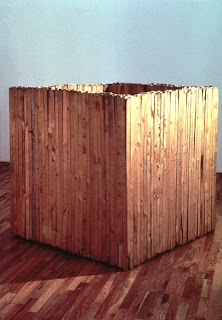
The piece is actually called "The Newborn", by Constantin Brancusi. What I particularly like is that he used the egg for both form/shape and symbolism.
Somewhere between student and teacher.


 To make a long story short, Judd eventually went a little crazy with people installing his works incorrectly and letting other people casually lean against them while they looked at painting instead. He moved to the middle of nowhere in Texas, got his hands on some 340 acres, and set up his own museum. The Chinati Foundation in Marfa, TX is the result.
To make a long story short, Judd eventually went a little crazy with people installing his works incorrectly and letting other people casually lean against them while they looked at painting instead. He moved to the middle of nowhere in Texas, got his hands on some 340 acres, and set up his own museum. The Chinati Foundation in Marfa, TX is the result.